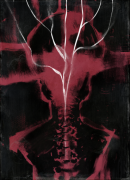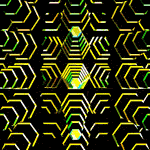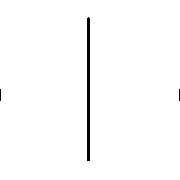|
Jhet posted:You can at least figure out if it's a soft wood by pushing something into those growth rings. It just looks like the inside of some good old wood that gets torn out of remodels and fix ups around here, and that's mostly old growth fir. I did find some newer cut cedar that looked like that after it greyed, but I'd bet against a hardwood if I had to bet. Definitely not hardwood, I'd bet on cedar.
|
|
|
|

|
| # ? May 16, 2024 20:09 |
|
Sounds legit, thanks. Into the skip it goes.
|
|
|
|
Next step on my cabinet is making a drawer. For the front, I'm using the end of the spalted sweet gum board I used for the door panels. I did not use it for the door panels because it was insanely twisted with a huge knot. Has a great pattern though. Planing this flat was a motherfucker and I really need to sharpen my planes again afterwards. But I can't decide which face and orientation works best. Opinions? a)  b)  c)  d) 
|
|
|
|
A or C for me
|
|
|
|
I like (a), cause it looks like a dude sticking his tongue out. The rest look like a worried Scooby Doo ghost.
|
|
|
|
I like a because the grain makes it into a sort of U cup shape when the cabinet is standing up and that's at the bottom, which to me implies its function as a drawer. C does that too but I really like that stark limb inclusion being visible.
|
|
|
|
Definitely C, imo. The big triangular inclusion on A is too asymmetrical for my tastes, just doesn't work for me.
|
|
|
|
C or D because I don't really like prominent knots if I can help it, but that's entirely personal and if you think the knot looks cool go for it! I think I slightly prefer D over C because the dark part of the board is next to the darker door frames and it eases the transition a bit. But maybe having the lighter part there kind of highlights the contrast and that's neat? Be prepared for that sweetgum to keep moving. It's can be really pretty stuff but it is like the least stable wood I've ever encountered. E: got my letters wrong e2: looking at them all in thumbnails I think I like C best actually. You have the light part of the panels towards the inside and the light part of the drawer being towards the center really highlights the doorframes. I like the idea of wild woodgrain constrained by man's geometry if you want to get philosophical about it. Kaiser Schnitzel fucked around with this message at 23:45 on Jul 21, 2021 |
|
|
|
Kaiser Schnitzel posted:C or D because I don't really like prominent knots if I can help it, but that's entirely personal and if you think the knot looks cool go for it! I feel like knots are an all or nothing thing. I either want no knots at all or I want multiple knots so that none of them are particularly attention grabbing, but I never want just one.
|
|
|
|
C. Keeps all the lighter colored grain facing the center.
|
|
|
|
Thanks for the input. I was pretty against the knot side but I was open to someone convincing me. I was mostly unsure ofColdPie posted:C. Keeps all the lighter colored grain facing the center. vs Kaiser Schnitzel posted:the dark part of the board is next to the darker door frames and it eases the transition a bit. quote:Be prepared for that sweetgum to keep moving. It's can be really pretty stuff but it is like the least stable wood I've ever encountered. I'm hoping that it won't be too bad. The only places I have it are the floating door panels and the drawer front.
|
|
|
|
I'm trying to remember a book that was either mentioned itc or in the anarchist series but it's like a whole book about how to design things and spaces for humans to use and it has, like, all of the detail and dimensions for stuff. I remember an example of, like, a dining room: chair seat height and depth, back height, table top height, minimum distance from chair to wall depending on room traffic patterns, all that jazz. Might have had kinematics or physiology or anatomy or some word like that in the title? Anyone know what I'm talkin about?
|
|
|
|
Bloody posted:I'm trying to remember a book that was either mentioned itc or in the anarchist series but it's like a whole book about how to design things and spaces for humans to use and it has, like, all of the detail and dimensions for stuff. I remember an example of, like, a dining room: chair seat height and depth, back height, table top height, minimum distance from chair to wall depending on room traffic patterns, all that jazz. Might have had kinematics or physiology or anatomy or some word like that in the title? Anyone know what I'm talkin about? 
|
|
|
|
Bloody posted:I'm trying to remember a book that was either mentioned itc or in the anarchist series but it's like a whole book about how to design things and spaces for humans to use and it has, like, all of the detail and dimensions for stuff. I remember an example of, like, a dining room: chair seat height and depth, back height, table top height, minimum distance from chair to wall depending on room traffic patterns, all that jazz. Might have had kinematics or physiology or anatomy or some word like that in the title? Anyone know what I'm talkin about? https://www.amazon.com/Illustrated-...034395557&psc=1
|
|
|
|
Bloody posted:I'm trying to remember a book that was either mentioned itc or in the anarchist series but it's like a whole book about how to design things and spaces for humans to use and it has, like, all of the detail and dimensions for stuff. I remember an example of, like, a dining room: chair seat height and depth, back height, table top height, minimum distance from chair to wall depending on room traffic patterns, all that jazz. Might have had kinematics or physiology or anatomy or some word like that in the title? Anyone know what I'm talkin about? https://www.academia.edu/42151325/Human_Dimension_and_Interior_Space This one i think.
|
|
|
|
Yes! That's the one! Thanks
|
|
|
|
AFewBricksShy posted:I have the 6' rail saw kit. tracecomplete posted:The ACS looks really wobbly. A guy I know ended up mounting the top itself onto a more secure base. The Kreg track saw is only a little cheaper than the Makita and the Makita works on the more standard pattern of rail (which accessories tend to be made for, etc) while I'm fairly sure the Kreg only works on Kreg's. DeWalt is the same way with their proprietary track. The saw itself seems fine though? So I bought the tracksaw accessory to be used with a conventional circular saw for something I was building. I don't recall what, but i was very disappointed with trying to cut the zero clearance edge when I was working on the floor of my garage. Not having room for a big work bench or area is a huge limitation and makes doing a lot of things unpleasant. My thought with the ACS is it gives me a table that I can stow away and the pegs and stop blocks appear to make batching out cuts on sheet goods "easy". tracecomplete mentioned Makita. I did find this locally, but no idea how the price is: https://austin.craigslist.org/tls/d/austin-makita-track-saw/7338306265.html If there is an affordable table/system that I can use along with the Makita, then I'm listening. Festool, while nice, and every pro-youtube-woodworker uses them, is just way too expensive for my occasional hobby and my bullshit "2-car" garage. I'm extremely envious of my friend in Houston who lives something like 2 blocks away from a makerspace with a complete wood shop, cabinet saws and all. If there was anything of the sort in South Austin, I would just get a membership to that.
|
|
|
|
Broke both my hammers trying to extract a nail. Don't try and pull nails from nail guns. Two new shafts, also the plastic handle on our bread knife broke so I made a new one:  
|
|
|
|
Enderzero posted:Well it seems the reason that insane deal on a planer and shelix head was available still is because the guy is not responding - radio silence for over 24 hours after emailing him. But I found a guy on lumberjocks 45 minutes away whoís moving and selling a bunch of stuff and sold me the 735 with feed plates, stand, and extra blades for $500 so I think thatís still pretty solid - would have been $800 or so after tax? I signed up for an account and played up the hey we are fellow forum members angle and he seemed happy itíd be going to a fellow traveler and not a rando on Craigslist so that might have saved me a few bucks. Got to try this out and this planer is really awesome. Had some maple with a thin white veneer that got scratched and I want to use it for a picture frame and after a couple of passes to take off the veneer it's got a ridiculously smooth surface. Really cool. I should be picking up a vintage #5 and a #7 this weekend from a guy who restores them and then I'll be all set for a while. Oh, I also got some electronic earmuffs, the Impact Pro from Honeywell - for some reason all the ones that just have a passthrough microphone are branded for shooting, while the woodworking ones often just have bluetooth or am/fm radio nonsense. I don't like feeling so isolated while wearing protection and these are great, they can even amplify sound if you want but still kept the planer and shop vac combo at safe levels. I grabbed some highly rated gel pads and they work very well and are super comfortable. And my PEC 12" combo square blemished came in too. Approaching Starrett levels of accuracy and quality for only $30? Hell yeah. Engineer's square shows it's nice and square and it feels pretty smooth (to my untrained hands) after some 3 in 1 oil.
|
|
|
|
I got a PEC blem square years ago, fantastic square. I have a couple of others I found 2nd hand and none have the same feel of quality. Anyway also threw together some sawhorses from scrap tonight. 
|
|
|
|
Stultus Maximus posted:Next step on my cabinet is making a drawer. For the front, I'm using the end of the spalted sweet gum board I used for the door panels. I did not use it for the door panels because it was insanely twisted with a huge knot. Has a great pattern though. Planing this flat was a motherfucker and I really need to sharpen my planes again afterwards. Go with C, it's the happiest one. 
|
|
|
|
Stultus Maximus posted:Next step on my cabinet is making a drawer. For the front, I'm using the end of the spalted sweet gum board I used for the door panels. I did not use it for the door panels because it was insanely twisted with a huge knot. Has a great pattern though. Planing this flat was a motherfucker and I really need to sharpen my planes again afterwards. Guess I'm the only one who likes, wait let's rephrase that. Pick D.
|
|
|
|
Mr. Mambold posted:Guess I'm the only one who likes, wait let's rephrase that. Pick D. Same here. I like the dark against the dark frame of the door.
|
|
|
|
MetaJew posted:My thought with the ACS is it gives me a table that I can stow away and the pegs and stop blocks appear to make batching out cuts on sheet goods "easy". I asked my buddy who has one and he says the top is fine, but he's the one who put it on top of a cabinet he built to have a stable base for it. That kinda precludes stowing it away easily. Would a knockdown bench of some flavor be within your capabilities right now? I'm kinda wondering, though, because I was thinking I should buy an MFT or ACS, or make one, before I really got started with a workbench at all, and after that I kinda feel like it's worth asking: do you need a "table/system", or do you need a table, which you can build or buy from Home Depot, with some reasonably accurately bored holes in it? YMMV, of course; I'm no expert, I've just been using a track saw for stuff for a few months now. But my plan is to I'm just putting a 5x5 grid (maybe just 4x4, haven't decided yet) of 3/4" holes, spaced at 4" increments, in my wooden workbench top. From a 5x5 grid I can get use two pegs to derive most angles I'd need on sheet goods without having to flip over to cut the side I don't want to cut on, and I'm just planning to leave a track saw clamp hanging off the edge of the bench. If I find it too much of a pain I intend to route out a channel to stick a sacrificial strip of MDF into for easier crosscuts. The ACS definitely is good at repeatable sheet cuts. I don't think anyone would say it's not. It can do a whole bunch of angles and do some surface clamping. Is all of it the thing you need for the stage you're at? I found it wasn't mine, is all I'm saying. In retrospect, I didn't want a workbench specifically for hand planing and the like, I probably would've just bought one of those Husky steel-leg ones and sanded down the top and put the holes in myself. tracecomplete fucked around with this message at 22:00 on Jul 22, 2021 |
|
|
|
That Works posted:Yup. I made one of these out of 2 strips of 1/2" MDF for my saw, cut on both sides of the center riser strip so I have it cut to the foot of my circular saw on the short and long sides from the blade on each side of the riser. Oh goddamn, I've also used a homemade tracksaw with 1/2" mdf for years and never once thought to put the long side on the other side. I made two, one just over 4' and one just over 2'. They've both been super useful. (I will buy a tracksaw one day. It's the running joke in my family about if any extra $ comes in.)
|
|
|
|
I'm shelving the thing I've been working on because oak is proving to be too much of a pain in the rear end, and I will be starting again with more planning this time. I am looking to pull the trigger on some boards from an actual lumber place, and I'm gonna see about getting a variety of woods to experience working with. At least, I plan to get more than I need for just this one project, knowing that this is a learning experience. I am definitely going to get some basswood and poplar based on previous advice in this thread. Aside from oak, the place I'm looking at also has alder, ash, birch, cherry, cypress, hard maple, hickory, mahogany, pine, and soft maple. Which of these are advisable for novice hand tool woodworker, and which of them are solid avoids?
|
|
|
|
Cherry is pretty easy to work with, pretty cheap depending on where you live, and gorgeous, IMO.
|
|
|
|
Mahogany (which is probably not mahogany mahogany, but one of a number of different species that are similar, such as sapele) can be difficult to work with because of interlocking grain.
|
|
|
|
|
Similar question I guess, Iíve started woodworking with hand tools recently and was lucky enough to have a work table on the basement of this house when I bought it but itís not very thick and has no vice (aside from one I bolted onto the top of the surface) or dog holes so Iím intending to build a work bench, and wanted to ask what considerations I should make when choosing what timber to use - my local mill has a bunch of species native to the UK I can use, so European oak (b-grade so probably quite knotty), cherry and maple are all around the same price and ash is a little cheaper, and beech cheaper still. Should I be looking for the hardest available (probably the oak I think) or does it not matter hugely? If cherry is a little easier to work would that be a better alternative?
Noxville fucked around with this message at 11:54 on Jul 23, 2021 |
|
|
|
Noxville posted:Similar question I guess, Iíve started woodworking with hand tools recently and was lucky enough to have a work table on the basement of this house when I bought it but itís not very thick and has no vice (aside from one I bolted onto the top of the surface) or dog holes so Iím intending to build a work bench, and wanted to ask what considerations I should make when choosing what timber to use - my local mill has a bunch of species native to the UK I can use, so European oak (b-grade so probably quite knotty), cherry and maple are all around the same price and ash is a little cheaper, and beech cheaper still. Should I be looking for the hardest available (probably the oak I think) or does it not matter hugely? If cherry is a little easier to work would that be a better alternative? Here is a pdf of The Anarchistís Workbench. Itís worth a read. He uses Southern Yellow Pine, which Iím guessing you donít have access to, but his reasoning will still be useful. If you donít want to read all that - just use beech.
|
|
|
|
The Anarchist Workbench is good, it provides reasoning rather than only prescribed instructions. Although though a combination of recent lumber prices and a sale at my local store, there was a brief window where a benchtop made of exotics was about the same price as a yellow pine. I'm not going to claim I wasn't tempted to make a vulgar purple or padauk work bench, but instead took that as a sign to wait.
|
|
|
|
signalnoise posted:I'm shelving the thing I've been working on because oak is proving to be too much of a pain in the rear end, and I will be starting again with more planning this time. I am looking to pull the trigger on some boards from an actual lumber place, and I'm gonna see about getting a variety of woods to experience working with. At least, I plan to get more than I need for just this one project, knowing that this is a learning experience. I am definitely going to get some basswood and poplar based on previous advice in this thread. Aside from oak, the place I'm looking at also has alder, ash, birch, cherry, cypress, hard maple, hickory, mahogany, pine, and soft maple. Which of these are advisable for novice hand tool woodworker, and which of them are solid avoids? African mahogany is fairly reasonable price-wise and easy to work by hand, but sometimes has an interlocked grain like sapele. If you are working exclusively with hand tools, Iíd stay away from sapele. Ash is not too much different from oak, but not quite as hard. Hickory is a bear. Cherry is very nice to work with, as is hard maple, but hard maple is, uh, hard. White pines are nice to work with, yellow pines are not. Cypress can be quite pleasant to work and pretty to look at, but itís very soft and has the same hard/soft growth ring structure as yellow pine (and oak) that can be frustrating if youíre chopping dovetails. I am unreasonably prejudiced against soft maple because of really warpy stuff I got one time, but itís basically fine. I havenít worked much with birch or alder, but they are both fine. Tl;dr: For something pretty, cherry is probably your best bet if itís not too expensive. If it is, alder gets called Ďpoor manís cherryí for a reason. If it doesnít need to be pretty, tulip poplar is wonderful. Basswood is often a little cheaper, but I wouldnít go out of your way to find it over poplar. Noxville posted:Similar question I guess, Iíve started woodworking with hand tools recently and was lucky enough to have a work table on the basement of this house when I bought it but itís not very thick and has no vice (aside from one I bolted onto the top of the surface) or dog holes so Iím intending to build a work bench, and wanted to ask what considerations I should make when choosing what timber to use - my local mill has a bunch of species native to the UK I can use, so European oak (b-grade so probably quite knotty), cherry and maple are all around the same price and ash is a little cheaper, and beech cheaper still. Should I be looking for the hardest available (probably the oak I think) or does it not matter hugely? If cherry is a little easier to work would that be a better alternative?
|
|
|
|
Serenade posted:The Anarchist Workbench is good, it provides reasoning rather than only prescribed instructions. When have you most recently checked lumber prices? In my area a 2x4x8 construction stud is down from $10.50 to $6.50 over the last couple months.
|
|
|
|
If you're in Europe, definitely look into beech. As said it has good workability, and is eminently suited to build workbenches from. It's also one of the cheapest hardwoods widely available commercially, which is a definite pro as well. Don't rule out softwoods like spruce though, they're not as dense or hard as the likes of beech, but still make for a perfectly serviceable workbench. I built mine out of spruce and some douglas fir, and it's just fine. (The supply situation is kinda turbo-hosed right now, so this is more of a general advice for when price/availability isn't a problem anymore.)
|
|
|
|
Kaiser Schnitzel posted:If beech were cheap and common in North America, we would all be building our benches out of it. Itís a great wood for a workbench, as is ash. Both are easy to work and plenty hard and strong. Ash is maybe a little more stable but beech is plenty stable too-use whichever is cheaper. Beech is actually the cheapest they stock at just over £30 per cubic foot for boards (compared to ash at just under £40 and oak/cherry/maple at just over £45). Will very likely go with beech, thanks all.
|
|
|
|
Just Winging It posted:If you're in Europe, definitely look into beech. As said it has good workability, and is eminently suited to build workbenches from. It's also one of the cheapest hardwoods widely available commercially, which is a definite pro as well. Don't rule out softwoods like spruce though, they're not as dense or hard as the likes of beech, but still make for a perfectly serviceable workbench. I built mine out of spruce and some douglas fir, and it's just fine. (The supply situation is kinda turbo-hosed right now, so this is more of a general advice for when price/availability isn't a problem anymore.) yeah a softwood frame with a hickory or maple top so you can beat the living poo poo out of it works great
|
|
|
|
Kaiser Schnitzel posted:What are you trying to make and what problems were you having with oak? A fightstick with an angled front "palm rest" or whatever you'd call it. Essentially, the oak was just incredibly hard to cut and plane. Even with a freshly sharpened iron, I could not get good results. I fully expect that someone else, or me later down the line, could get the job done well. However, today is not that day. On the other hand, I did learn a lot and I'll be going into it with a better understanding of planning for the next attempt. I'm working exclusively with hand tools except for a power drill and a palm router, which I'll basically only use for rounding corners at the end. The rest is hand saws, hand plane, etc. Thanks for the info on the wood! From the replies, seems like cherry is my best bet.
|
|
|
|
oak is a pretty straightforward, hard-ish utility wood, if you're finding it 'incredibly hard' to cut you're likely to have a bad time with basically anything tougher than poplar. Try out something towards the bottom of the janka hardness scale until you've got the hang of making efficient cuts and/or figured out why your plane is a butter knife (these are not great materials to go around hitting things with, for the same reason they're good ones to learn on, but you can always make another stick) A Wizard of Goatse fucked around with this message at 18:13 on Jul 23, 2021 |
|
|
|
signalnoise posted:A fightstick with an angled front "palm rest" or whatever you'd call it. Essentially, the oak was just incredibly hard to cut and plane. Even with a freshly sharpened iron, I could not get good results. I fully expect that someone else, or me later down the line, could get the job done well. However, today is not that day. On the other hand, I did learn a lot and I'll be going into it with a better understanding of planning for the next attempt. I'm working exclusively with hand tools except for a power drill and a palm router, which I'll basically only use for rounding corners at the end. The rest is hand saws, hand plane, etc. Thanks for the info on the wood! From the replies, seems like cherry is my best bet. iirc your fightstick is like a video game controller thing and not a stick for hitting people? Cherry would be a great choice because it is very dimensionally stable. Oak is definitely not. E: if it is for hitting people/other fightsticks then forget everything I said and use hickory or ash and split the stick out of the board instead of sawing it out.
|
|
|
|

|
| # ? May 16, 2024 20:09 |
|
A Wizard of Goatse posted:if you're finding it 'incredibly hard' you're likely to have a bad time with basically anything tougher than poplar. Try out something towards the bottom of the janka hardness scale until you've got the hang of making efficient cuts and/or figured out why your plane is a butter knife My plan at the moment is to get enough materials to make 1.5 fightsticks out of cherry and poplar. My planing definitely needs work, as does my sharpening. I also need to make some tools because I'm sure part of that difficulty was in having an inappropriate setup in my garage. I need to make some stuff to better hold the stuff in place while I'm working on it. Like, I could plane the oak, but whereas with softer stuff I'd get wispy ribbons, the shavings I got off the oak were more what I'd see from a pencil sharpener. This right here is a good example of my poor planning. I was wanting to do one board across the front and to plane it down where necessary. Getting it to connect correctly on both sides of the box over a 14 inch gap is a difficulty I needed to experience, as it's hard enough just to get something like that to join up right on one side. Terrible planning, but hey experience is the best teacher right?  Kaiser Schnitzel posted:iirc your fightstick is like a video game controller thing and not a stick for hitting people? Cherry would be a great choice because it is very dimensionally stable. Oak is definitely not. Yes, a controller for video games. I don't expect to ever be making weapons. Maybe from foam.
|
|
|














































